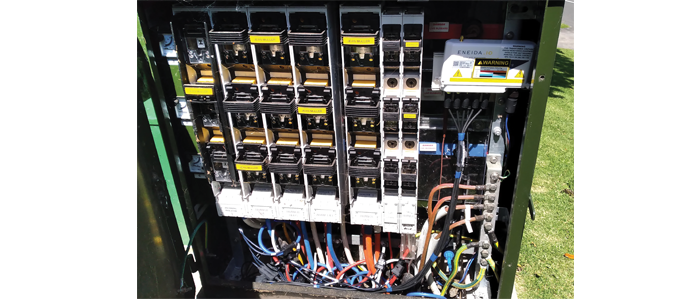- +61 7 3374 2877
- Email Us
The low voltage (LV) network represents around 35% of Powerco’s electricity assets and is their most common interface with customers. This part of the network will be exposed to the new paradigms introduced by the current energy transition.
Driven by the increasing number of Distributed Energy Resources (DER) installed in the LV network, for example, photovoltaic systems (PVs), network management becomes more complicated [1].
Excess generation from a PV system leads to current injection back into the network, contributing significantly to phase imbalance, but even if there is no overproduction, the mere decrease in consumption is enough for consumers to be impacted by real effects on the network. Another concern is the ever-growing number of electric vehicles (EV) making use of the LV network for charging. These large loads can destabilise a previously balanced system if they are not considered [2].
Previously Powerco had minimal visibility over its LV network, so they embarked on a project to address the significant shortcoming to enable visibility of the network.
The key objectives of the project were.

Besides the addition of the LV monitoring device to the LV Distribution Substations, this project provided an opportunity to investigate the best approach for the future of SCADA integration within Powerco infrastructure alongside the Eneida DeepGrid® AI platform.
The chosen protocol for SCADA data acquisition from the devices was MQTT and Sparkplug B. This protocol ensures easy integration with different vendors, equipment types and host applications, as it defines a standard topic format known to all clients, reducing variability. This is a flexible solution since data published by the participants can be discovered quickly, and all clients are notified in real-time as soon as data becomes available. Figure 1 illustrates the overall system architecture.